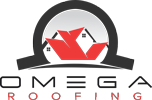The home improvement and construction industry is evolving rapidly, driven by technological advancements, sustainability demands, and changing consumer preferences. Understanding these trends allows homeowners and professionals to make informed decisions, optimize resources, and anticipate future needs. Below, we examine the most significant trends shaping the industry and their implications.
Advancements in Construction Technology
Technology continues to revolutionize the home improvement industry, enhancing efficiency, precision, and collaboration. Innovations such as drone technology are now integral for conducting aerial surveys, mapping landscapes, and capturing thermal imagery to identify energy inefficiencies.
Augmented reality (AR) and 3D modeling software allow contractors and homeowners to visualize projects before construction begins, reducing errors and improving customer satisfaction. Smart contracts powered by blockchain technology streamline transactions, ensuring transparency and minimizing disputes. These tools are becoming indispensable as construction professionals seek to stay ahead of the competition.
Emphasis on Green Building and Sustainability
Sustainability has emerged as a cornerstone of modern construction practices. Homeowners increasingly demand eco-friendly designs that minimize energy consumption and reduce environmental impact. Builders are responding by adopting materials like self-healing concrete, biofoam insulation, and flexible aluminum.
Green building certifications such as LEED (Leadership in Energy and Environmental Design) are gaining prominence, providing a framework for sustainable construction practices. Energy-efficient installations like solar panels, green roofs, and advanced HVAC systems further contribute to reducing a home’s carbon footprint while lowering utility costs for occupants.
Focus on Health and Safety Standards
The COVID-19 pandemic highlighted the importance of health and safety in the workplace, prompting the construction industry to adopt stricter protocols. Enhanced personal protective equipment (PPE), including customizable options to accommodate a diverse workforce, ensures safety without compromising comfort.
Technological tools like robotics and high-tech environmental sensors are helping monitor air quality, noise levels, and other factors impacting worker health. Simultaneously, 3D printing is revolutionizing the way components are manufactured, reducing waste and ensuring precision in construction processes.
Challenges in Material Costs and Labor Markets
Fluctuating material costs and labor shortages remain significant challenges for the industry. Builders are leveraging technology to reduce dependency on manual labor and optimize resource allocation. Prefabrication and modular construction methods are gaining traction, enabling quicker assembly and reducing overall project costs.
Despite these challenges, the industry is adapting by forming strategic partnerships with suppliers and investing in workforce training programs. These initiatives ensure that projects remain on track while maintaining high-quality standards.
Omega Roofing’s Dedication to Innovation
Located in Jackson, TN, Omega Roofing, LLC exemplifies excellence in roofing and exterior construction. As an Atlas Pro-certified company, Omega Roofing incorporates cutting-edge materials and sustainable practices into every project. With a steadfast commitment to accountability, community engagement, and integrity, Omega Roofing ensures exceptional results that meet the evolving demands of modern homeowners.
Predictions for the Future of Home Improvement
The future of home improvement will be defined by further integration of smart technologies, such as IoT-enabled appliances and automated systems. Homes will become increasingly self-sufficient, equipped with renewable energy solutions and advanced insulation technologies.
Sustainability will remain a priority, with governments and organizations incentivizing eco-friendly practices. Builders and contractors will focus on creating resilient structures capable of withstanding climate-related challenges, ensuring long-term durability and safety.
Frequently Asked Questions
What are the benefits of sustainable building materials?
Sustainable materials reduce environmental impact, lower energy costs, and enhance the durability and resale value of homes.
How does augmented reality improve construction planning?
Augmented reality allows contractors and homeowners to visualize designs, identify potential issues, and make adjustments before construction begins.
Why are health and safety protocols critical in construction?
Strict protocols protect workers from injuries, improve productivity, and ensure compliance with industry standards and regulations.
What role does modular construction play in the industry?
Modular construction reduces build times, minimizes waste, and lowers costs by assembling components off-site before installation.
How can homeowners incorporate green technologies in their projects?
Homeowners can install solar panels, energy-efficient windows, and smart HVAC systems to reduce energy consumption and increase sustainability.
Conclusion
The home improvement and construction industry is at the forefront of technological, environmental, and operational transformations. By embracing advancements like AR, sustainable practices, and innovative safety measures, professionals can deliver superior outcomes. These trends not only benefit homeowners but also contribute to the industry’s long-term growth and resilience. For projects that integrate these innovations, trust companies like Omega Roofing, LLC, to deliver quality and expertise.
Read also: Comprehensive Guide to Preparing Your Home for Spring

